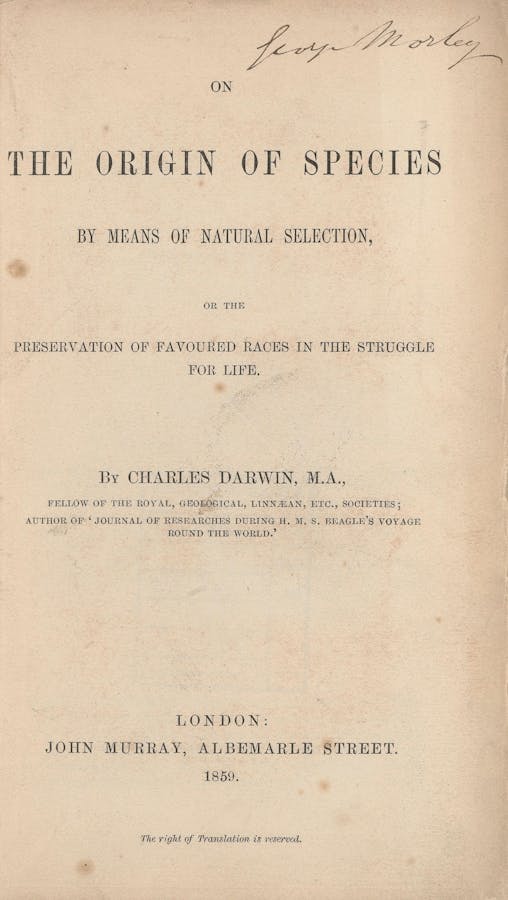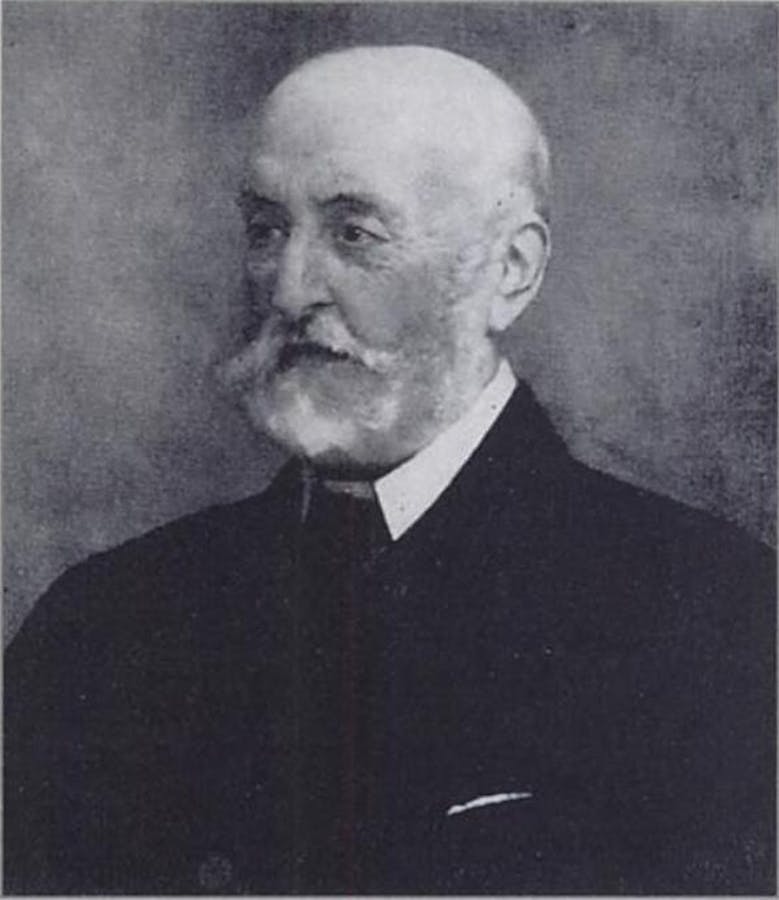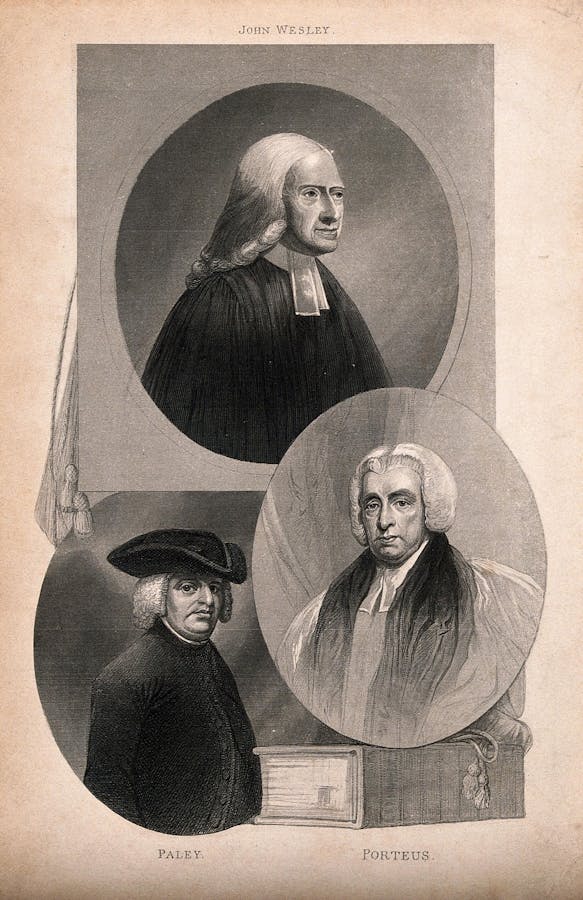Is the diversity and complexity of life on earth the product of a divine designer? Is it the product of unguided natural forces?
In the nineteenth century, controversy erupted over a theory proposed by the English naturalist Charles Darwin. This theory claimed that life’s stunning complexity arose through natural and unguided processes.
The scientific and religious debates over biblical ideas of creation, design, and purpose in nature would alter the way people discussed the Bible and science. For some, it remains the defining issue.
“And God said, ‘Let the waters swarm with swarms of living creatures, and . . . let the earth bring forth living creatures according to their kinds.’”
Genesis 1:20, 24
Have you ever heard the “watchmaker analogy”? The English clergyman and philosopher William Paley was an ardent proponent. Echoing Robert Boyle and others, Paley argued that just as a watch required a watchmaker, so too did complex structures, such as the eye, require a designer.
Paley was a leading figure in “natural theology,” an effort to reveal God’s existence using the latest scientific discoveries. In the early 1800s, proponents of natural theology were at the forefront of scientific inquiry, not only generating new scientific knowledge but also communicating this knowledge to the public through their pulpits and podiums.

Charles Darwin's famous, and explosive, work.
The Origin of the Species, by Charles Darwin. Wellcome Collection. Public Domain Mark.

A portrait of Charles Darwin from 1869.
Julia Margaret Cameron, Public domain, via Wikimedia Commons

This depiction of botanist Asa Gray shows him in the herbarium at Harvard University. In 1862, he donated his collection of plant specimens to the university.
akg-images / WHA / World History Archive

Alfred Russel Wallace portrait, 1889.
Alfred Russel Wallace. Photograph by Sims, 1889. Wellcome Collection. Public Domain Mark.

A portrait of George Mivart, ca. 1900.
Unknown author, Public domain, via Wikimedia Commons
Why were Charles Darwin’s ideas controversial?
Much of the religious debate over Darwin’s theory focused on his insistence that life developed without specific guidance from God, which raised questions about the biblical idea of God’s providential care over creation. As he wrote, “There seems to be no more design in the variability of organic beings and in the action of natural selection, than in the course which the wind blows.”
These early debates within science and among believers laid the groundwork for the debates that continue today.
In 1859, more than twenty years after his famous expedition to the Galapagos Islands, Charles Darwin published his most famous work, On the Origin of Species. Darwin argued not only that species changed over time, but also that they share a common ancestry. Moreover, this change is primarily driven by a process he called “natural selection.”
On the Origin of Species immediately sparked scientific and religious controversy as people debated the merits of Darwin’s methods and evidence. He would continue refining his theory over the ensuing decades.
Asa Gray was a Harvard botanist and one of America’s leading scientific figures in the nineteenth century. He quickly embraced On the Origin of Species, becoming one of its staunchest defenders.
Yet, Gray disagreed with Darwin on several key points. He viewed natural selection as a mechanism God used to shape the living world, something Darwin rejected. Gray was also skeptical this mechanism alone could produce complex organs such as the eye, much less account for the appearance of human beings.
British naturalist, geographer, and explorer Alfred Russel Wallace independently developed the theory of evolution by natural selection around the same time as Charles Darwin.
Unlike Darwin, however, Wallace believed that life was the result of a guiding intelligence and that natural selection could not account for human intelligence and morality as well as certain physical features. While critical of organized religion, he spent the latter part of his life exploring how the living world exhibited design and purpose. Today, Wallace is recognized as the co-founder of the theory of natural selection.
St. George Jackson Mivart was an English biologist and Roman Catholic who initially embraced Darwin’s theory of natural selection before becoming one of its fiercest opponents.
Mivart argued in his 1871 work On the Genesis of Species that Darwin’s theory could not account for the human intellect or the development of complex organs such as the eye, since the structure would serve no purpose initially.
Have you ever heard the “watchmaker analogy”? The English clergyman and philosopher William Paley was an ardent proponent. Echoing Robert Boyle and others, Paley argued that just as a watch required a watchmaker, so too did complex structures, such as the eye, require a designer.
Paley was a leading figure in “natural theology,” an effort to reveal God’s existence using the latest scientific discoveries. In the early 1800s, proponents of natural theology were at the forefront of scientific inquiry, not only generating new scientific knowledge but also communicating this knowledge to the public through their pulpits and podiums.

Charles Darwin's famous, and explosive, work.
The Origin of the Species, by Charles Darwin. Wellcome Collection. Public Domain Mark.

A portrait of Charles Darwin from 1869.
Julia Margaret Cameron, Public domain, via Wikimedia Commons

This depiction of botanist Asa Gray shows him in the herbarium at Harvard University. In 1862, he donated his collection of plant specimens to the university.
akg-images / WHA / World History Archive

Alfred Russel Wallace portrait, 1889.
Alfred Russel Wallace. Photograph by Sims, 1889. Wellcome Collection. Public Domain Mark.

A portrait of George Mivart, ca. 1900.
Unknown author, Public domain, via Wikimedia Commons
Why were Charles Darwin’s ideas controversial?
Much of the religious debate over Darwin’s theory focused on his insistence that life developed without specific guidance from God, which raised questions about the biblical idea of God’s providential care over creation. As he wrote, “There seems to be no more design in the variability of organic beings and in the action of natural selection, than in the course which the wind blows.”
These early debates within science and among believers laid the groundwork for the debates that continue today.
In 1859, more than twenty years after his famous expedition to the Galapagos Islands, Charles Darwin published his most famous work, On the Origin of Species. Darwin argued not only that species changed over time, but also that they share a common ancestry. Moreover, this change is primarily driven by a process he called “natural selection.”
On the Origin of Species immediately sparked scientific and religious controversy as people debated the merits of Darwin’s methods and evidence. He would continue refining his theory over the ensuing decades.
Asa Gray was a Harvard botanist and one of America’s leading scientific figures in the nineteenth century. He quickly embraced On the Origin of Species, becoming one of its staunchest defenders.
Yet, Gray disagreed with Darwin on several key points. He viewed natural selection as a mechanism God used to shape the living world, something Darwin rejected. Gray was also skeptical this mechanism alone could produce complex organs such as the eye, much less account for the appearance of human beings.
British naturalist, geographer, and explorer Alfred Russel Wallace independently developed the theory of evolution by natural selection around the same time as Charles Darwin.
Unlike Darwin, however, Wallace believed that life was the result of a guiding intelligence and that natural selection could not account for human intelligence and morality as well as certain physical features. While critical of organized religion, he spent the latter part of his life exploring how the living world exhibited design and purpose. Today, Wallace is recognized as the co-founder of the theory of natural selection.
St. George Jackson Mivart was an English biologist and Roman Catholic who initially embraced Darwin’s theory of natural selection before becoming one of its fiercest opponents.
Mivart argued in his 1871 work On the Genesis of Species that Darwin’s theory could not account for the human intellect or the development of complex organs such as the eye, since the structure would serve no purpose initially.











